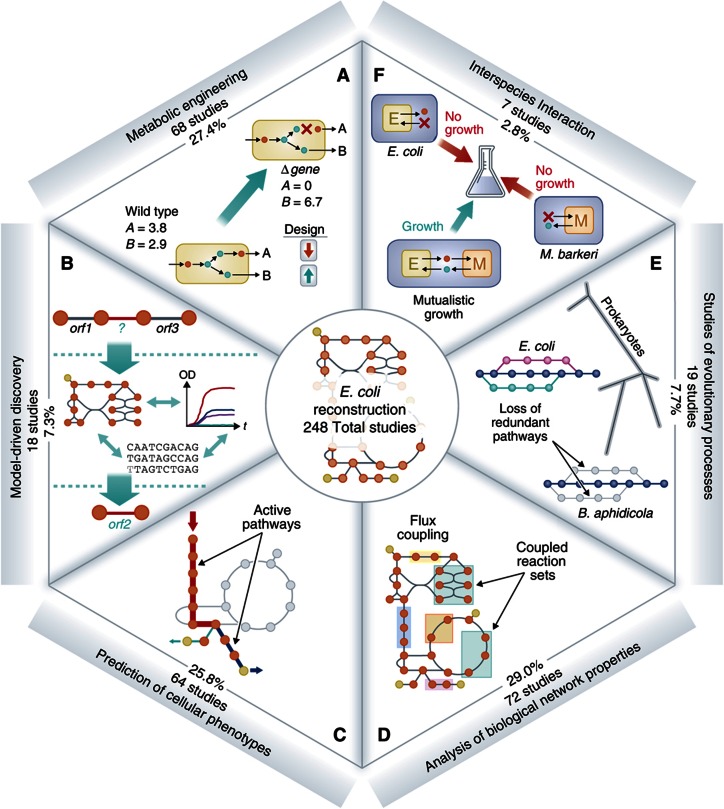Figure 3.
Six categories of uses and number of studies for each use of the E. coli metabolic GEM. The original five categories defined in 2008 (Feist and Palsson, 2008) include (A) metabolic engineering, (B) model-driven discovery, (C) prediction of cellular phenotypes, (D) analysis of biological network properties and (E) studies of evolutionary processes. A new category has been added, (F) interspecies interaction. The addition of this category signifies a growing trend in the field to explore the interaction of the E. coli metabolic network with other organisms and across different environmental conditions. Specifically, studies have explored host/pathogen interactions (Jain and Srivastava, 2009), cocultures (Wintermute and Silver, 2010; Hanly and Henson, 2011; Tzamali et al, 2011), ecology (Klitgord and Segrè, 2010) and chemotaxis (Kugler et al, 2010). The number of studies in this category is expected to increase, as the interest in understanding the complexities of microbial interactions and ecosystems continues to grow. The complete lists of the studies for each category are included in Supplementary Table S1.

